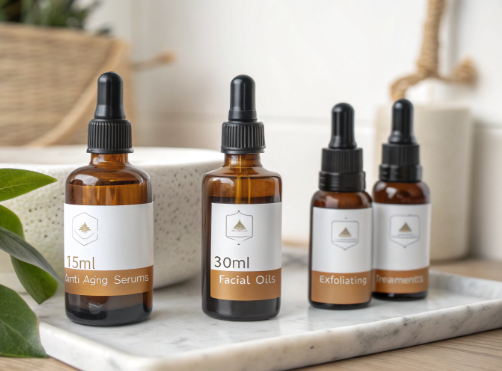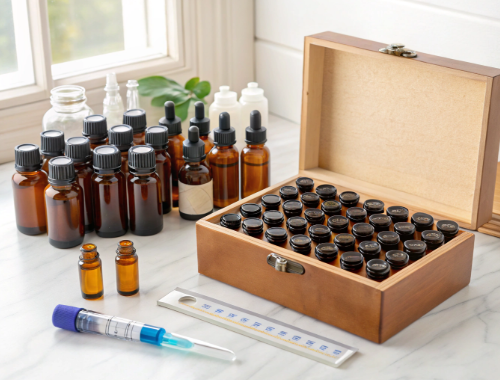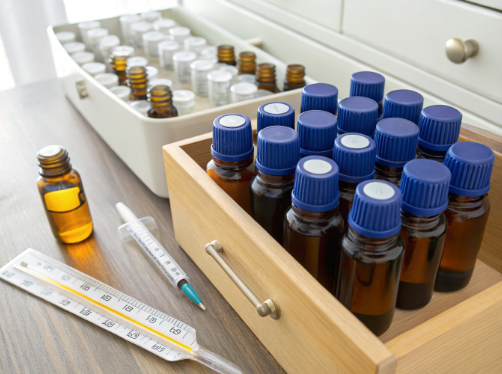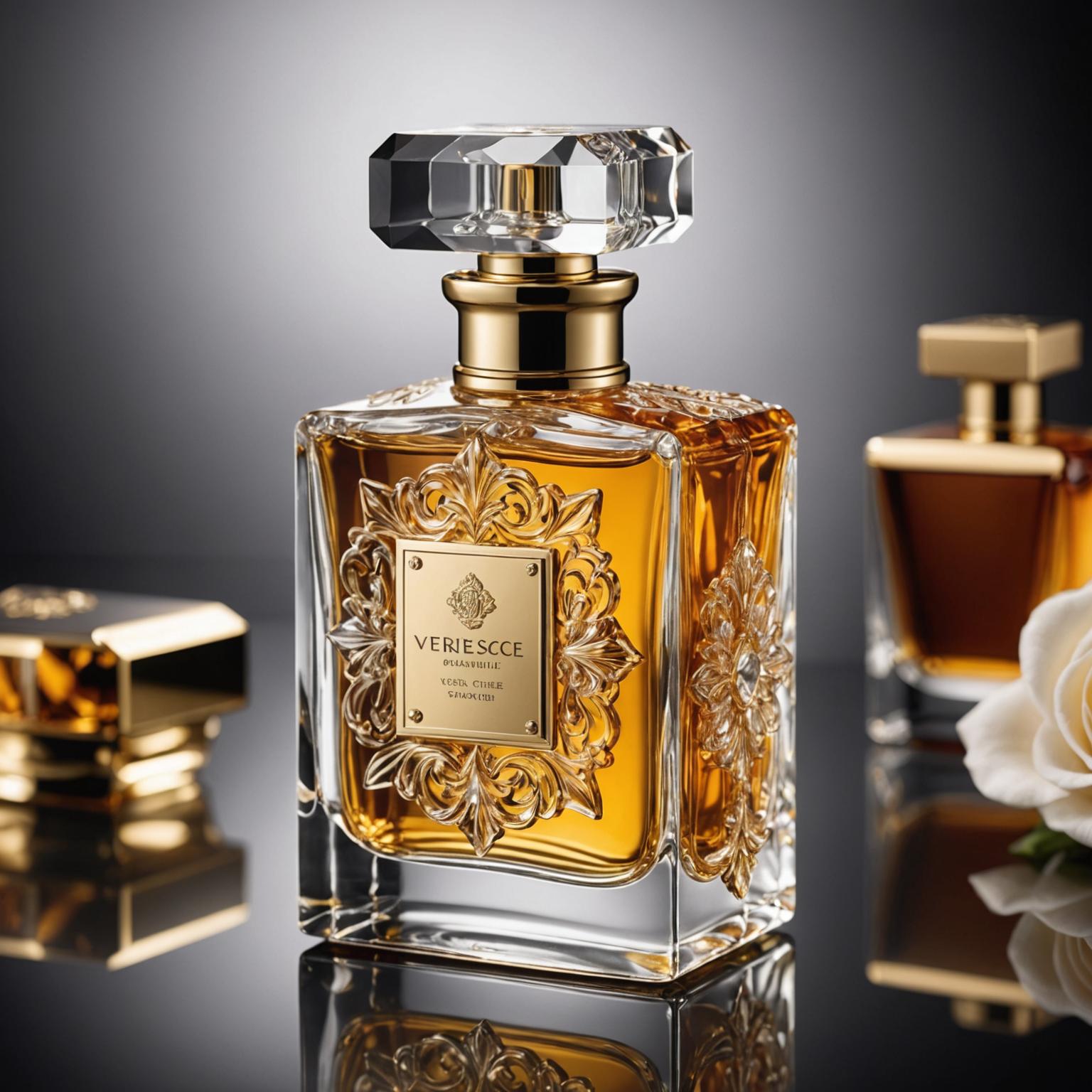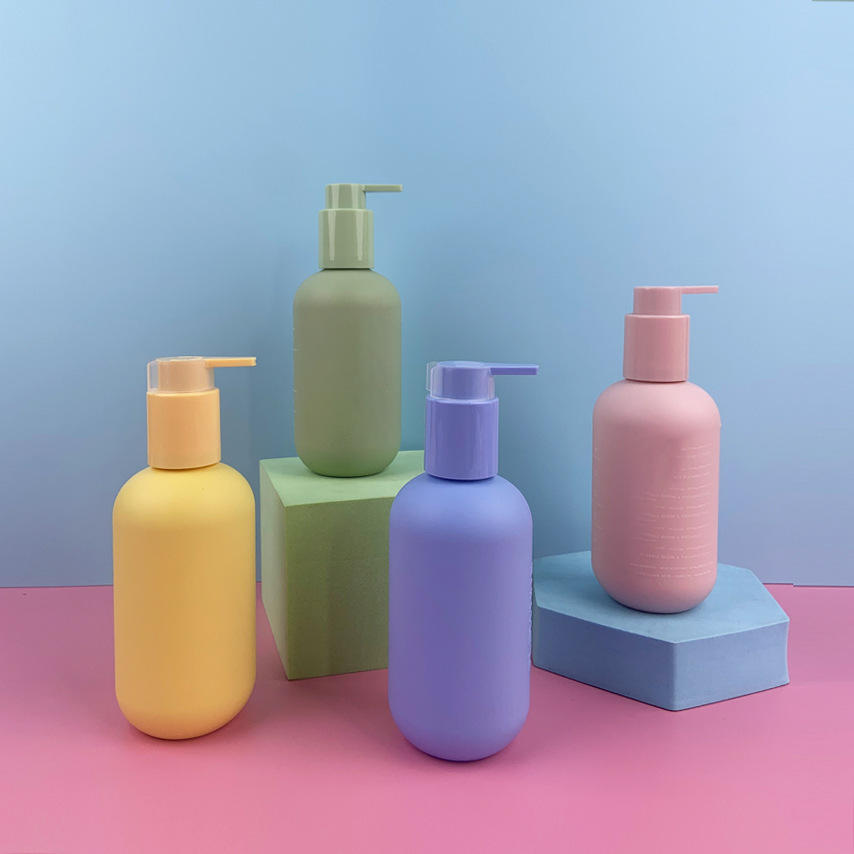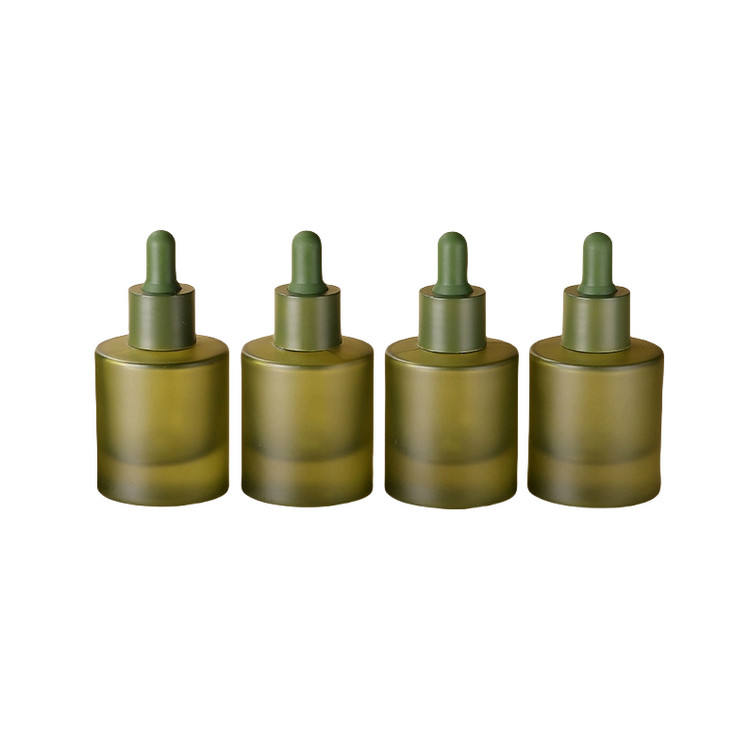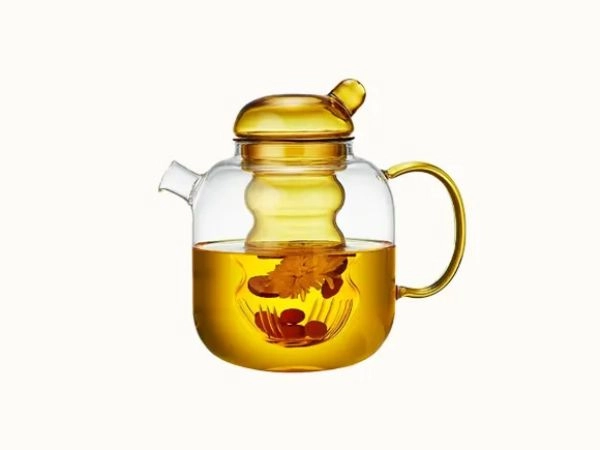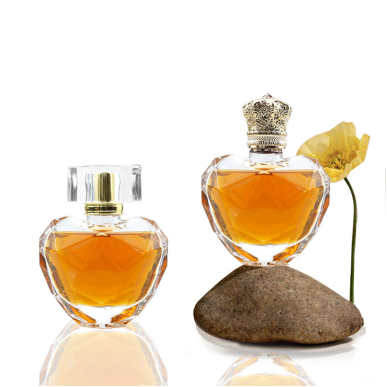Essential oils are powerful—but fragile. Stored the wrong way, even the finest oils can lose their potency, aroma, and therapeutic effect.
To maintain their quality, essential oils should be stored in dark glass bottles, kept in a cool, dry place away from sunlight, oxygen, and heat.
At PauPack Bottles, we provide packaging solutions for brands that want their oils to stay fresh—from factory to customer shelf. Here’s your complete guide to smart, stable storage.
How should essential oils be stored?
It starts with protecting the oil from its biggest enemies: light, heat, oxygen, and moisture.
Essential oils should be stored upright in airtight amber or cobalt glass bottles, in a dry, dark, and temperature-stable location—ideally under 25°C (77°F).
Why these conditions matter:
-
Light (especially UV) breaks down volatile compounds
-
Heat accelerates oxidation and evaporation
-
Oxygen changes oil chemistry (especially citrus oils)
-
Moisture can contaminate or dilute the oil if not sealed properly
Ideal Storage Checklist
| Factor | Best Practice | Avoid |
|---|---|---|
| Light | Use amber/cobalt bottles, store in drawers or closed boxes | Windows, transparent racks |
| Temperature | Store between 10–25°C (50–77°F) | Radiators, direct sunlight |
| Air Exposure | Use reducer inserts, keep caps tight | Leaving bottles open or loose caps |
| Moisture | Dry space, upright storage | Humid bathrooms, leaking caps |
PauPack’s bottle designs prioritize EO-safe sealing, with pressure-tested caps and reducer inserts that prevent evaporation and leaks during transit or storage.
What is the best storage for essential oils?
Think beyond just “a cabinet.” Your essential oil storage should be a functional, organized, and protective system.
The best storage for essential oils includes UV-blocking glass bottles, sealed caps or droppers, temperature-controlled containers, and clearly labeled organization.
Whether you're storing 10 bottles or 1000, you want a system that protects and preserves.
Home vs. Commercial Storage Tips
| Setting | Storage Solution | Notes |
|---|---|---|
| Home Use | Wooden or metal EO storage box | Cool drawer or closet, not a windowsill |
| Clinic/Spa | Label racks with lockable cabinets | Use FIFO (first in, first out) system |
| Wholesale | Warehouse bins in climate-controlled room | Pallet racking with batch tracking |
| Travel Kits | Padded, upright storage pouch | Avoid heat, shake, or pressure changes |
We often advise clients using PauPack bottles to also provide reusable kits or custom boxes, reinforcing both brand identity and shelf-life protection.
Is it okay to store essential oils in plastic bottles?
Short answer: Only for certain plastics, and only for the short term.
Storing essential oils in plastic bottles long-term is not recommended. Use glass bottles for purity, stability, and safety—plastic can degrade or leach chemicals over time.
Essential oils are lipophilic and solvent-like, meaning they dissolve and absorb materials from plastic, especially if exposed to heat or stored for long periods.
Plastic Material Comparison
| Plastic Type | EO Safety Level | Use Case |
|---|---|---|
| PET | ⚠️ Limited | Sample kits, outer bottle use |
| HDPE | ✅ Safer | Carrier oil storage (non-EO) |
| PP | ✅ Excellent | Caps, reducers, sprayers |
| PVC | ❌ Not safe | Avoid for any EO contact |
When is plastic acceptable?
-
As part of dropper/spray attachments (PP/HDPE)
-
Temporary sample containers with 1–2 weeks shelf life
-
Secondary casing, never primary EO storage
PauPack glass bottles are chemically stable and come with optional PP components that are tested with citrus and menthol oils for long-term integrity.
What is the 30/50/20 rule for essential oils?
It’s not just how you store your oils—but how you use them. This rule guides proper blending, which in turn affects how long a blend stays usable.
The 30/50/20 rule refers to the percentage distribution of top, middle, and base notes in a balanced essential oil blend: 30% top, 50% middle, and 20% base.
This matters for storage because:
-
Top notes (like citrus, mint) degrade fastest—need tighter caps and amber glass
-
Base notes (like vetiver, myrrh) last longer and may stabilize the overall formula
-
Middle notes are the “heart” but can still oxidize with heat or UV exposure
Example Blend + Packaging Suggestion
| Note Type | Example Oils | Drop Ratio | Suggested Bottle |
|---|---|---|---|
| Top | Lemon, grapefruit | 3 drops | 5ml amber with reducer cap |
| Middle | Lavender, geranium | 5 drops | 10ml dropper bottle |
| Base | Patchouli, frankincense | 2 drops | Roller with tight steel ball |
By aligning formulation and packaging, brands can ensure the blend maintains its aroma and function from first drop to last.
Conclusion
Essential oils are precious, and proper storage is the easiest way to protect your product and reputation. With the right bottle, environment, and handling—you ensure every drop delivers.
Store in dark glass, keep cool, seal tight—because quality isn’t just what you make, it’s how you keep it.




